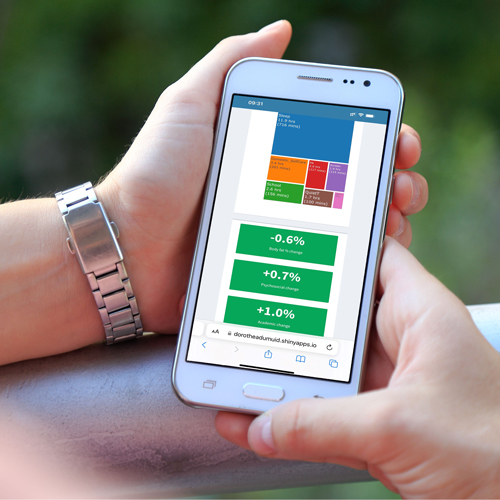09 September 2022
 Not too sport heavy, not too sleep deprived – finding the ‘just right’ balance in a child’s busy day can be a challenge. But while parents may struggle to squeeze in homework amid extracurricular commitments and downtime, a world-first app could provide a much-needed solution.
Not too sport heavy, not too sleep deprived – finding the ‘just right’ balance in a child’s busy day can be a challenge. But while parents may struggle to squeeze in homework amid extracurricular commitments and downtime, a world-first app could provide a much-needed solution.
Developed by University of South Australia in partnership with the Murdoch Children's Research Institute, the Health-Day-App is helping parents understand which combination of activities can best help their child’s mental, physical, and academic outcomes.
The study found that shifting 60 minutes of screen time to 60 minutes of physical activity resulted in 4.2 per cent lower body fat, 2.5 per cent improved wellbeing and 0.9 per cent higher academic performance.
Lead researcher, UniSA’s Dr Dot Dumuid says that the app will help parents and health professionals better understand the relationships between children’s time use, health, and academic outcomes.
“How children use their time can have a big impact on their health, wellbeing, and productivity,” Dr Dumuid says.
“We know that screens are not great for children’s wellbeing, so if they’re choosing to play video games at the expense of playing sport, it’s easy to guess the negative impacts effects on their health.
“This app helps guide healthier behaviours. By tracking a child’s current activities over the day, and using the app to adjust these, we can model how any changes are expected to impact on their physical, wellbeing and academic performance.
“It’s a quick and easy tool that can predict health and wellbeing outcomes for children.”
Assessing 1685 data records from the Australian Child Health CheckPoint study (children aged between 11-12 years), the new app enables users to make hypothetical adjustments to time use behaviours.
It firstly requests users to input a child’s current 24-hour time usage across seven categories – sleep, screen time, physical activity, quiet time (such as reading or listening to music), passive transport (such as catching public transport), school-related time (including homework), and domestic/self-care (chores/getting ready).
It also includes an advanced option for health professionals to account for puberty and social economic status. On the subsequent panel (accessed by selecting ‘Specify reallocations’ on the left side bar) app users can move sliders to try out time reallocations of their choice. Expected differences to body fat percentages, psychological health, and academic performance are presented in numerical and graphical formats.
“The Healthy-Day-App lets parents, carers and health professionals consider possible changes to a child’s day and predict how this might impact health outcomes,” Dr Dumuid says.
“I encourage parents to play around with it – it may just make you reconsider how much screen time your child has in the car, in a café, waiting for an appointment…try it and see. It may surprise you.”
The Healthy-Day-App can be accessed here: www.unisa.edu.au/Healthy-Day-App
The study is published in PLOS ONE, and can be accessed here: https://journals.plos.org/plosone/article?id=10.1371/journal.pone.0272343
…………………………………………………………………………………………………………………………
Contact for interview: Dr Dot Dumuid E: Dot.Dumuid@unisa.edu.au
Media contact: Annabel Mansfield M: +61 479 182 489 E: Annabel.Mansfield@unisa.edu.au




